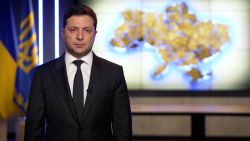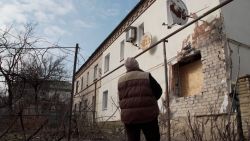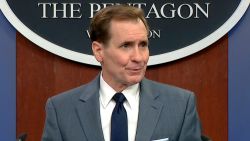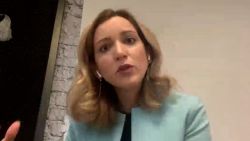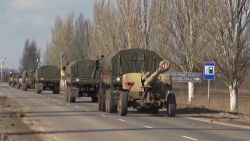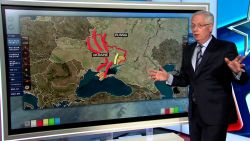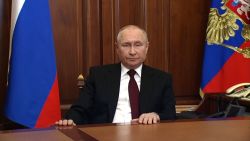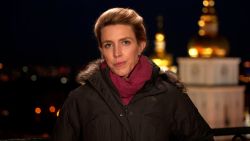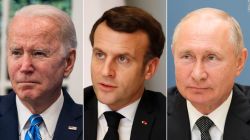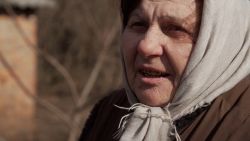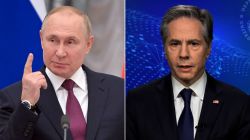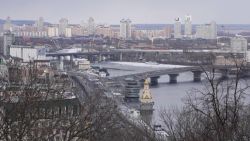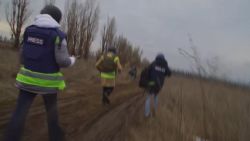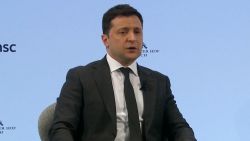Story highlights
NEW: "We had just two options: bad, and worse," the Ukrainian PM tells CNN
A German government spokesman says the deal, reached after 17-hour talks, is a "reason for hope"
The deal includes a ceasefire to begin Sunday and the withdrawal of heavy weapons
Marathon peace talks aimed at ending the bloody crisis in eastern Ukraine concluded Thursday in a breakthrough: A ceasefire that’s due to start Sunday and an agreement for both sides to pull back heavy weapons.
If the ceasefire holds – which is far from certain – it could end a 10-month conflict that has claimed more than 5,000 lives, many of them civilians, and plunged East-West relations to their lowest point since the end of the Cold War.
“We had just two options: bad, and worse. So we decided at this particular period of time to get the bad option. Probably this option will save the lives of Ukrainian soldiers, and I hope this option will save lives of Ukrainian civilians, of innocent people, who are under a constant shelling of Russian-led terrorists,” Ukrainian Prime Minister Arseniy Yatsenyuk said.
“It’s better to have this new deal rather than not to have (it). But we do not trust any words or any papers. We are to trust only actions and deeds,” he said.
The White House issued a statement with a tone of guarded optimism. “The United States welcomes the agreement reached today in Minsk. …” it said. “The agreement represents a potentially significant step toward a peaceful resolution of the conflict and the restoration of Ukraine’s sovereignty.”
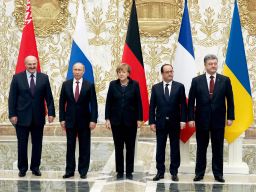
The statement urged that all parties take “immediate, concrete steps” to fulfill their commitments. “Heavy weapons must be withdrawn from the conflict zone, and Russia must end its support for the separatists and withdraw its soldiers and military equipment from eastern Ukraine,” the statement said.
Addressing reporters after the four-way overnight talks in Minsk, Belarus, Russian President Vladimir Putin said all parties had agreed to the ceasefire starting February 15 and called for restraint in the interim.
“I call on both sides to end the bloodshed as soon as possible” and come to a real political solution to the conflict, he said.
Putin said both sides have agreed to pull back heavy weapons. The talks between Russia, Ukraine, France and Germany took so long, he said, because authorities in Kiev still refuse to have direct contact with separatists.
German Chancellor Angela Merkel, speaking alongside French President Francois Hollande, said more work remained to be done, but “what we have on the table gives us great hope.”
The agreement may not be perfect, she said, but it has provided a chance to improve matters in eastern Ukraine and is “clearly preferable to the situation if we had done nothing.”
Merkel said Putin would be talking to separatist leaders about the deal. They were expected to travel to Moscow on Thursday to meet with Russian lawmakers.
Meanwhile, Ukrainian President Petro Poroshenko headed to Brussels, Belgium, to brief European leaders on the situation. Both Hollande and Merkel paid tribute to his efforts on behalf of Ukraine in the talks.
European Council President Donald Tusk said the agreement was “welcome news and gives hope” but that hope was not enough. “The real test is the respect of the ceasefire on the ground,” he said.
He added that after speaking with Merkel, his feeling was “that we should remain extremely cautious.”
Said one young man in Kiev, who recently signed up to fight pro-Russian rebels: “I don’t believe in the agreement at all. We’ve signed agreements in the past and all of them were breached.”
‘We must give Ukraine this chance’
In a televised statement, two separatist leaders, Igor Plotnitsky, of the self-proclaimed Luhansk People’s Republic, and Alexander Zakharchenko, of the self-proclaimed Donetsk People’s Republic, indicated they supported the deal.
“We must give Ukraine this chance,” said Plotnitsky, adding that the peace plan envisages constitutional reforms that will protect the rights of people in eastern Ukraine and change Kiev’s approach.
Zakharchenko said any violations of the terms agreed to so far, with further talks still needed on some points, would mean no more deals. “All responsibility for any violation of the agreement is on Petro Poroshenko,” he said.
A previous ceasefire deal, agreed to on September 19, also in Minsk, broke down amid continued fighting. It called for a drawback of heavy weapons, greater autonomy in the eastern Luhansk and Donetsk regions and a buffer zone along the Russia-Ukraine border.
The Kremlin released details of the new agreement, which is similar in part to the September deal, on its website, but it’s still unclear how elements of it will work. The points include:
• An immediate and comprehensive ceasefire in parts of Donetsk and Luhansk starting at midnight on February 15.
• The withdrawal of all heavy weapons by both parties at equal distances in order to create a security zone width of at least 50 kilometers (31 miles) from each other for artillery systems and more for longer-range weapons. The ceasefire line for the Ukrainians is the current front line and for the separatists it’s the front line as it was at the time of the previous deal on September 19.
• This process should begin no later than the next day after the ceasefire and should be over within 14 days.
• The Organization for Security and Cooperation in Europe, which has a monitoring team in Ukraine, will monitor the ceasefire line and withdrawal of heavy weapons.
• A dialogue on new local elections and the special status of the Donetsk and Luhansk regions will begin the day after the withdrawal.
• A law will be created to give amnesty to people involved in events in Luhansk and Donetsk.
• Both sides must ensure the release and exchange of all hostages and illegally held prisoners by no later than the fifth day after the withdrawal.
• Social payments such as pensions should be restored, and Ukrainian authorities should regain full control of the banking system in conflict-affected areas.
• Full control of the border will be restored to the Ukrainian government, beginning the day after local elections are held.
• Withdrawal of all foreign troops and military equipment from Ukraine, including mercenaries, and the disarmament of militia groups.
All-night session
German Foreign Minister Frank-Walter Steinmeier voiced cautious optimism after Thursday’s deal, which came after 17 hours of talks.
“We have not achieved everything, but at least there is a ceasefire. This also includes agreements on securing the eastern borders of Ukraine, elections and the exchange of prisoners,” he said in a statement.
“It is a chance to move away from escalation and towards political momentum.”
In a joint declaration, released by the German government, the four leaders stated “their full respect for the sovereignty and territorial integrity of Ukraine” and that they “firmly believe that there is no alternative to an exclusively peaceful settlement.”
The leaders “will use their influence on relevant parties” to ensure the package of measures are put in place, the declaration said.
“Leaders share the conviction that improved cooperation between the EU, Ukraine and Russia will be conducive to the crisis settlement,” it added.
To that end, the three parties will hold further talks on energy supply and a possible free trade deal between Ukraine and the European Union, which is of concern to Russia, it said.
Poroshenko: Ukraine will remain a united state
The question of Ukraine’s territorial integrity and sovereignty was a key issue going into the talks.
Russia annexed its southeastern Crimea region last spring, shortly before separatists in the Donetsk and Luhansk regions declared their independence from Kiev, triggering months of conflict.
“Ukraine will always be a unitary state. No federalization whatsoever! #UnitedForUkraine,” Poroshenko tweeted after the deal was announced.
In a post on his Facebook page, he said that “we did not agree to a single ultimatum” and that the ceasefire would be implemented regardless of any previous agreements.
“For the successful reform we need just one precondition: peace. And we tried to do our best to make Ukraine a successful state, peaceful, reliable with a very strong European aspiration,” the Ukrainian president later told reporters in Brussels.
The German- and French-led peace initiative was prompted by worsening fighting between separatists and Ukrainian government forces in recent weeks, threatening not only the lives of more civilians, but the stability of the region.
CNN’s Nick Paton Walsh in the Donetsk region said separatist fighters that his team spoke to had learned of the ceasefire deal from CNN – and were highly skeptical of any promises made.
The noise of shelling could still be heard Thursday, and there was no obvious change in the tempo of the combat, he said.
A separatist fighter who spoke to CNN in Dukuchayevsk, not far from Donetsk city, said: “Ukrainians won’t have a ceasefire. Ukraine armed forces, I mean. We can resolve this conflict only one way: Ukraine withdraws its armed forces from the territory of the Donetsk Republic. That’s the only possible way.”
“How can we talk to them?” asked another fighter. “Only with this,” he said, slapping his weapon.
It’s possible the separatists may seek to seize further territory before Sunday. Since the Ukrainian forces have to withdraw their weapons from the current front line as the ceasefire comes into effect, the separatists stand to keep hold of significant territory they’ve won in recent weeks.
A spokesman for the National Defense and Security Council of Ukraine told CNN on Thursday that two Ukrainian soldiers had been killed and 21 injured in the past 24 hours. Russian tanks, rocket launchers and armored personnel carriers had also crossed the border from Russia into Ukraine overnight, he said.
Russia has steadfastly denied accusations that it is sending forces and weapons into Ukraine. But top Western and Ukrainian leaders have said there isn’t any doubt that Russia is behind surging violence and separatists’ efforts to take over territory in eastern Ukraine.
IMF: New $17.5 billion program for Ukraine
Meanwhile, International Monetary Fund director Christine Lagarde on Thursday announced a new IMF bailout package that’s worth $17.5 billion over the next four years. It has still to be approved by the board of directors.
“Over the past year, despite the challenging environment, the Ukrainian authorities have clearly shown their commitment to ambitious reform on several key fronts,” Lagarde said.
These include strong fiscal discipline and moves to strengthen anti-corruption measures.
The deal replaces a separate $17 billion bailout agreed to last year by the IMF. Only $4.5 billion of those funds were distributed, bringing the IMF’s total commitment to $22 billion.
The crisis in Ukraine, which stemmed from a trade agreement, has forced more than 1.5 million people from their homes, according to the United Nations.
CNN’s Khushbu Shah, Matthew Chance, Frederik Pleitgen, Emma Burrows, Alla Eshchenko, Brian Walker and Tatyana Drotenko contributed to this report.



